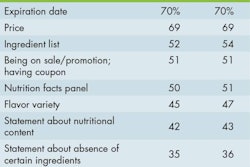Part three of a series: Petfood strategy revisited
Joe Zweiful, chairman of the board of directors of Feed Your Pet Inc., and Justin Case, marketing director, meet again to talk about the second part of the strategy paper, the plan.
Joe: We’ve gone through the inventory. I must say it was quite revealing for me, also because it gives a solid foundation for further work. I am all ears to hear about next steps.
Justin: The inventory has indicated a number of issues that need to be taken by the horns, more than we can reasonably handle. Therefore, we have set some priorities and we now have a set of key issues. Things that are vital on our way to fulfilling the dream.
Joe: Don’t rub it in. You know the current strategy paper—I hardly dare call it that now—as well as I do. No key issues, but a long and exhausting list of things to do. A wish-list rather than a focused one. But, how many key issues can you reasonably handle?
Justin: I’d say a company of our size and degree of complexity should limit itself to five, maximum six key issues. Because working on these priorities will come on top of the day-to-day work anyway. You sometimes hear that you can hire an additional bunch of people to be able to deal with more key issues. I am not in favor of that, because by the time the new people understand what it is all about, often some quite valuable time is lost. If you have to hire, do not bring in the troops, but define a few gaps that need to be filled. This will also avoid having unrest in your team.
Joe: Correct. Unrest is the last thing you want if you change the course of your ship. But I’m still trying to figure out when you start to quantify. Or if you want, when the youngster with the laptop is invited to the table.
Justin: Hold your horses. The quantification is nigh! Because we now start to deal with the objectives—more particularly, with SMART objectives.
Joe: Wait a minute! Come again?
Justin: SMART stands for specific, measurable, applicable, realistic and time-related. Objectives containing these five elements are the clearest I can imagine. However, just know that one key issue can have more than one objective. So the challenge is to have a precise definition or description of the objectives, because in the end somebody will be held accountable regarding the results.
Joe: Focus again! That seems to be key in strategy, or probably everything we do: focus. I can now see even clearer than before that focus limits the chance of error and provides for more efficient work. But as far as strategy is concerned, it is a necessity only in the planning phase, I think.
Justin: Yes, to a great extent. In your thinking phase, you probably want to avoid focus because you wish to open all windows to have the broadest possible view and full spectrum of thoughts.
Joe: Did you manage to get your people on board? I mean, for most of them this will be new stuff, I guess. And some might feel threatened because they see their area of freedom more strictly defined.
Justin: Luckily, the majority of my people bought into the different way of thinking and doing. Only two negatives, sadly to such an extent that they could become a destructive influence on the team. I had to let them go. And I now go myself as well; my team is waiting for further instructions.
21st Pet Street, home of Change Stranamics
















